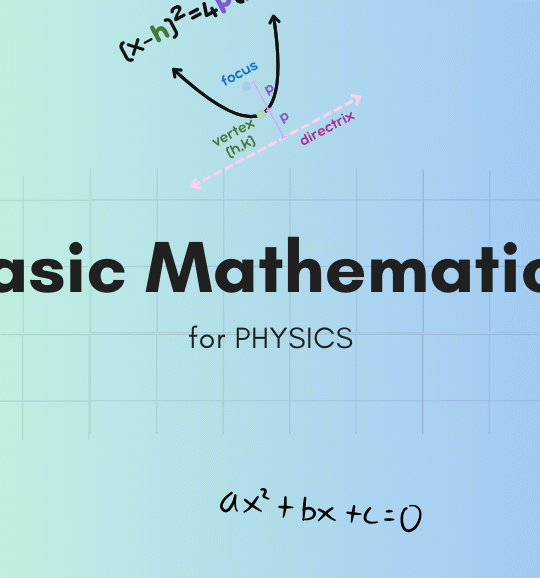NEET CHEMISTRY
DOWNLOAD FREE STUDY MATERIALS FOR NEET CHEMISTRY
Chemistry is a vital part of the NEET syllabus, contributing to nearly one-fourth of the total questions in the exam. As a result, it plays a crucial role in determining a student’s overall score and rank. Although many medical aspirants find Physics to be a challenging subject, it can become a high-scoring area with the right approach. By building a strong conceptual foundation and regularly practicing numerical problems, students can gain a significant edge in NEET Chemistry.
To support your self-study journey, we offer a comprehensive collection of free NEET Chemistry study materials that are carefully curated by expert educators. These resources are designed to help students create an effective study plan, stay consistent with practice, and ultimately score high in the Chemistry section. You can download all essential study materials—including concept notes, formula sheets, MCQs, and previous year question solutions—absolutely free.
The NEET Chemistry syllabus, derived from Class 11 and 12 NCERT textbooks, includes a wide range of topics such as Physical Chemistry, Inorganic Chemistry and Organic Chemistry. These subjects not only test your theoretical understanding but also your ability to apply concepts in real-life scenarios. Therefore, mastering these topics is essential not just for cracking NEET but also for sharpening your logical reasoning and analytical thinking skills—key attributes for any aspiring doctor.
Download NEET Chemistry Study Materials 100% Free
At Physics Terminal, we make NEET Chemistry simpler and more approachable through structured content, including concept-based explanations, solved examples, and topic-wise MCQs developed by experienced faculty. Our goal is to bridge the gap between theoretical knowledge and practical application, empowering students to excel in both board exams and competitive entrance tests.
Whether you’re aiming for a perfect score or simply want to improve your accuracy in NEET Chemistry, our resources are tailored to suit your needs. So why wait? Begin your NEET Chemistry preparation with us today and transform this demanding subject into one of your strongest scoring areas.
✅ NEET UG Syllabus
Official, up-to-date syllabus based on NTA guidelines
Downloadable PDFs categorized by subject and chapter
Highlights of newly added or removed topics
Download Latest NEET UG Syllabus HERE
✅ Previous Year Question Papers (PYQs) of NEET
Download NEET UG papers from previous years (PDF format)
Includes official answer keys for self-assessment
Helps analyze topic-wise weightage and difficulty trends
Download NEET Previous Year Question Papers in pdf

NEET 2026 SYLLABUS FOR CHEMISTRY
📘 Class 11 & 12 Chemistry Syllabus for NEET 2026
⚛️ UNIT 1: Some Basic Concepts of Chemistry
Matter and its nature, Dalton’s atomic theory, laws of chemical combination, concept of elements, atoms, and molecules, atomic and molecular masses, mole concept and molar mass, percentage composition, empirical and molecular formulae, chemical reactions, stoichiometry.
🧪 UNIT 2: Structure of Atom
Discovery of electron, proton, and neutron, atomic number, isotopes and isobars, Thompson’s model and its limitations, Rutherford’s model and its limitations, Bohr’s model and its limitations, concept of shells and subshells, dual nature of matter and light, de Broglie’s relationship, Heisenberg uncertainty principle, the concept of orbitals, quantum numbers, shapes of s, p and d orbitals, rules for filling electrons in orbitals – Aufbau principle, Pauli exclusion principle, Hund’s rule, electronic configuration of atoms, stability of half-filled and filled orbitals.
🔬 UNIT 3: Classification of Elements and Periodicity in Properties
Significance of classification, development of the periodic table, modern periodic law and the present form of the periodic table, periodic trends in properties of elements – atomic radii, ionic radii, ionization enthalpy, electron gain enthalpy, electronegativity, valence.
🔗 UNIT 4: Chemical Bonding and Molecular Structure
Valence electrons, ionic bond, covalent bond, bond parameters, Lewis structure, the polar character of covalent bond, the covalent character of ionic bond, valence bond theory, resonance, the geometry of covalent molecules, VSEPR theory, the concept of hybridization involving s, p, and d orbitals, molecular orbital theory of homonuclear diatomic molecules (qualitative idea only), hydrogen bond.
💨 UNIT 5: States of Matter: Gases and Liquids
Three states of matter, intermolecular interactions, types of bonding, melting and boiling points, role of gas laws in elucidating the concept of the molecule, Boyle’s law, Charle’s law, Gay Lussac’s law, Avogadro’s law, ideal behavior, empirical derivation of gas equation, Avogadro number, ideal gas equation, kinetic energy and molecular speeds (elementary idea), deviation from ideal behavior, liquefaction of gases, critical temperature, Liquid State – Vapour pressure, viscosity, and surface tension (qualitative idea only, no mathematical derivations).
🔥 UNIT 6: Thermodynamics
Concepts of system, types of systems, surroundings, work, heat, energy, extensive and intensive properties, state functions, the first law of thermodynamics – internal energy and enthalpy, heat capacity and specific heat, measurement of ΔU and ΔH, Hess’s law of constant heat summation, enthalpy of bond dissociation, combustion, formation, atomization, sublimation, phase transition, ionization, solution, and dilution, the introduction of entropy as a state function, the second law of thermodynamics, Gibbs energy change for spontaneous and non-spontaneous process, criteria for equilibrium, the third law of thermodynamics – a brief introduction.
⚖️ UNIT 7: Equilibrium
Equilibrium in physical and chemical processes, dynamic nature of equilibrium, law of mass action, equilibrium constant, factors affecting equilibrium – Le Chatelier’s principle, ionic equilibrium – ionization of acids and bases, strong and weak electrolytes, degree of ionization, ionization of polybasic acids, acid strength, concept of pH, hydrolysis of salts (elementary idea), buffer solutions, Henderson equation, solubility product, common ion effect (with illustrative examples).
🔄 UNIT 8: Redox Reactions
Concept of oxidation and reduction, redox reactions, oxidation number, balancing redox reactions in terms of loss and gain of electron and change in oxidation numbers, applications of redox reactions.
🧩 UNIT 9: Classification of Elements and Periodicity in Properties (Inorganic Chemistry)
Modern periodic law and the current form of the periodic table; s, p, d, and f-block elements; periodic trends in properties such as atomic and ionic radii, ionization enthalpy, electron gain enthalpy, valence, oxidation states, and chemical reactivity.
🔬 UNIT 10: P-Block Elements
General Introduction; electronic configuration; general trends in physical and chemical properties; unique behavior of the first element of each group; Group 13 to Group 18 elements.
🔋 UNIT 11: d- and f-Block Elements
General introduction, electronic configurations, occurrence, and characteristics of transition elements; general trends in properties such as physical properties, ionization enthalpy, oxidation states, atomic radii, color, catalytic behavior, magnetic properties, complex formation; preparation, properties, and uses of compounds like K₂Cr₂O₇ and KMnO₄; lanthanoids and actinoids, including electronic configurations, oxidation states, and lanthanoid contraction.
🔗 UNIT 12: Coordination Compounds
Introduction to coordination compounds; Werner’s theory; ligands, coordination number, denticity, chelation; IUPAC nomenclature of mononuclear coordination compounds; isomerism; bonding: valence bond approach and basic ideas of crystal field theory; color and magnetic properties; importance of coordination compounds in qualitative analysis, extraction of metals, and in biological systems.
🧫 UNIT 13: Purification and Characterisation of Organic Compounds
Purification methods (crystallization, sublimation, chromatography, distillation, differential extraction); qualitative and quantitative analysis including detection of elements (N, S, P, halogens) and calculations of empirical and molecular formulas.
🧬 UNIT 14: Some Basic Principles of Organic Chemistry
Tetra-valency of carbon, hybridization, classification based on functional groups, isomerism, nomenclature, types of organic reactions (substitution, addition, elimination, rearrangement), electronic effects (inductive, electromeric, resonance, hyperconjugation).
🛢️ UNIT 15: Hydrocarbons
Classification and isomerism; alkanes, alkenes, and alkynes – structure, properties, and reactions; aromatic hydrocarbons – structure, aromaticity, electrophilic substitution reactions.
🧪 UNIT 16: Organic Compounds Containing Halogens
Preparation, properties, and reactions of haloalkanes and haloarenes; environmental effects of compounds like chloroform and DDT.
🧴 UNIT 17: Organic Compounds Containing Oxygen
Properties and reactions of alcohols, phenols, ethers, aldehydes, ketones, carboxylic acids; important organic reactions such as nucleophilic addition and condensation.
🧪 UNIT 18: Organic Compounds Containing Nitrogen
Amines and diazonium salts – preparation, properties, reactions, and uses; importance in synthetic organic chemistry.
🍃 UNIT 19: Biomolecules
Classification and functions of carbohydrates, proteins, vitamins, nucleic acids; structure and function of biomolecules in biological processes.
⚗️ UNIT 20: Principles Related to Practical Chemistry
Detection of elements and functional groups in organic compounds; principles involved in the preparation of specific inorganic and organic compounds; qualitative and quantitative analysis including titrimetric and gravimetric analysis.
| Sl. No. | Chapter Name | Theory Notes | MCQ Collection | PYQ Solutions |
|---|---|---|---|---|
| 1 | Some Basic Concepts of Chemistry | Download | Download | Download |
| 2 | Structure of Atom | Download | Download | Download |
| 3 | Classification of Elements and Periodicity in Properties | Download | Download | Download |
| 4 | Chemical Bonding and Molecular Structure | Download | Download | Download |
| 5 | States of Matter: Gases and Liquids | Download | Download | Download |
| 6 | Thermodynamics | Download | Download | Download |
| 7 | Equilibrium | Download | Download | Download |
| 8 | Redox Reactions | Download | Download | Download |
| 9 | Hydrogen | Download | Download | Download |
| 10 | The s-Block Element | Download | Download | Download |
| 11 | Some p-Block Elements | Download | Download | Download |
| 12 | Organic Chemistry – Basic Principles & Techniques | Download | Download | Download |
| 13 | Hydrocarbons | Download | Download | Download |
| 14 | Environmental Chemistry | Download | Download | Download |
Chemistry Class 11 Chapter-wise Study Materials for NEET- Free Download
| Sl. No. | Chapter Name | Theory Notes | MCQ Collection | PYQ Solutions |
|---|---|---|---|---|
| 1 | The Solid State | Download | Download | Download |
| 2 | Solutions | Download | Download | Download |
| 3 | Electrochemistry | Download | Download | Download |
| 4 | Chemical Kinetics | Download | Download | Download |
| 5 | Surface Chemistry | Download | Download | Download |
| 6 | The p-Block Element (Group 15 to 18) | Download | Download | Download |
| 7 | The d- and f-Block Elements | Download | Download | Download |
| 8 | Coordination Compounds | Download | Download | Download |
| 9 | Haloalkanes and Haloarenes | Download | Download | Download |
| 10 | Alcohols, Phenols and Ethers | Download | Download | Download |
| 11 | Aldehydes, Ketones and Carboxylic Acids | Download | Download | Download |
| 12 | Organic Compounds Containing Nitrogen | Download | Download | Download |
| 13 | Biomolecules | Download | Download | Download |
| 14 | Polymers | Download | Download | Download |
| 15 | Chemistry in Everyday Life | Download | Download | Download |

